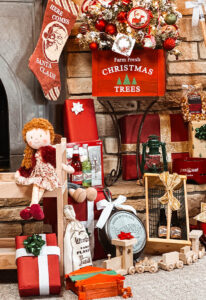Monday, Oct. 26, 2009
United Feature Syndicate
MARYJANE’S EVERYDAY ORGANIC
There is nothing more comforting on a cold winter’s day than the lush, radiant heat of a woodstove. Its warmth soaks into your skin, and its flame enlivens a room with a presence all its own. I’ve always loved the way fire dances and illuminates, warming hearth and soul. And I continue to invite the spirit of flame into my home, even after suffering the very real nightmare of a fire that consumed my house 13 years ago. In a mid-winter cold snap, 10 below zero, a faulty new chimney spread fire up through my rafters. To this day, when I think about how close I came to losing my children, I find myself short of breath.
It is physically painful to relive the memory of running to my daughter’s room to find her asleep under a ceiling of flames — a memory that is never far from my mind when I kindle the first fire of the season. But, I remind myself to breathe and offer thanks for all of my blessings, including the fire that will warm the tiny toes of my grandchildren this winter.
Fire is one of those wild forces of nature that has the power to both sustain and destroy us. But when handled properly, the rewards of heating with fire are bountiful. From significant financial savings to the wonder and comfort of flames, fire has the potential to be a modern homesteader’s best friend. If you’ve never dared to try wood heat, let me pass the torch that I’ve spent years tending. I’ve honed the tasks of selecting, splitting and safely burning wood into a fine art. Of course, I’ll be the first to admit that even the best of us can use a refresher now and then. So, even if you’re a seasoned stoker, I encourage you to read on.
Choose Your Wood Wisely
Whether you’re starting a fire in a woodstove, fireplace or campfire ring, the criteria for good wood remain the same. First and foremost, your firewood must be dry. Sounds obvious, but making sure the wood is truly dry enough can be trickier than you think.
When a log is first cut, up to 50 percent of its weight is water, making it hard to ignite and inefficient when burning. Plus, the poor combustion factor of wet wood increases smoky air pollution and dangerous creosote build-up inside your chimney. The best fuel is “seasoned” wood, which has been allowed to dry for 6 to 12 months after cutting.
Here’s what to look for:
— Cracks in the end grain
— Dull gray/brown coloring
— Freshly split surfaces that are dry to the touch
Chop Smart, Not Hard
What a farmgirl lacks in brawn she makes up for in brains. Let me tell you, we’re capable of tackling the tough job of splitting firewood with female ingenuity. Start by outfitting yourself with gloves, safety glasses, maul, sledgehammer (both available at any hardware store) and a chopping block. My block is a nice, level cross-section of a tree, measuring 16 inches high by 28 inches wide.
Position your block with plenty of overhead clearance for swinging your maul, and place a log on-end in the center of your block. Now, take a mighty swing with the maul and sink it into the log. Don’t worry if you miss — practice will perfect your technique! Use the weight of the maul by choking your right hand up the maul almost to the head while your left hand holds the base of the handle. (Reverse if you’re left-handed.) As you swing it down, slide your hands together so they connect at the same moment the maul meets wood.
Brawny folks sink the maul into the log again and again until it splits. However, pulling it out every time is a lot of work, and then you have to chase your log around every time it falls off the block. The same holds true if you use a wedge that you hammer into the wood with the back of the maul. Here’s a brain-over-brawn method to save you from tugging it out and swinging again and again: Once you’ve sunk the maul into the round, hold the maul handle firmly with one hand — out near the end. Now, choke up on the handle of the sledgehammer with your other hand, about halfway, and drop the sledgehammer head onto the back of the maul again and again, letting the weight of the sledgehammer pound the maul into the wood until it cracks open. The hand that is keeping a firm grip on the maul prevents the log from tipping off the block.
Stack your split firewood loosely, leaving space for air circulation, and cover them to keep out the weather.
FIRE-STARTERS FROM DRYER LINT
For homemade fire-starters, stuff dryer lint (from cottons only, no synthetics!) into the compartments of an empty cardboard egg carton, then pour melted wax from little bits of leftover candles over your lint “eggs,” and you’ll hatch a fire!
Copyright 2009, MaryJane Butters.
Distributed by United Feature Syndicate, Inc.



























